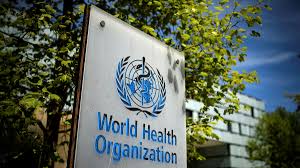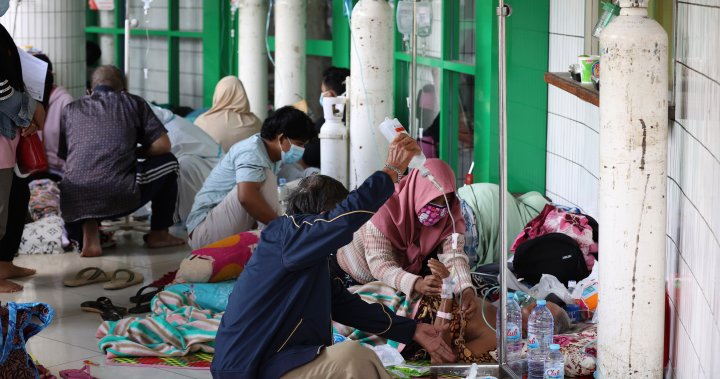Table of Contents
Introduction to the World Health Organization
The World Health Organization (WHO) is a specialized agency of the United Nations (UN) that was established in 1948. It is headquartered in Geneva, Switzerland, and has regional offices in six regions around the world. WHO’s main goal is to ensure the attainment of the highest possible level of health for all people, worldwide. It does this by providing leadership on global health matters, shaping the health research agenda, setting norms and standards, articulating evidence-based policy options, providing technical support to countries, and monitoring and assessing health trends.
Origins and Objectives of WHO
The World Health Organization (WHO) was established on April 7, 1948, as an agency of the United Nations (UN). The organization was created with the objective of promoting and protecting the health of people worldwide and was a response to the increased need for international cooperation in public health after World War II.
WHO’s main objectives are:
- To build a better, healthier future for people all over the world
- To support the attainment of the highest possible level of health by all people
- To provide leadership on global health issues
- To provide technical support and assistance to countries
- To shape the research agenda and set norms and standards for health
- To monitor the global health situation and assess health trends
WHO is committed to achieving better health for everyone, everywhere, by providing a leadership role in global health governance and by working with its member states and other partners to build strong, resilient health systems.
WHO’s Structures and Budgets
The World Health Organization (WHO) has a decentralized structure with six regional offices and country offices in its member states. The headquarters is located in Geneva, Switzerland. The highest decision-making body of WHO is the World Health Assembly (WHA), which is composed of all 194 Member States. The WHA meets annually to set priorities, policies, and budgets for the organization.
The Executive Board, which is composed of 34 members elected by the WHA, provides governance and oversight between the annual meetings of the WHA. The Director-General is the head of WHO and is appointed by the Executive Board for a five-year term.
WHO’s budget is primarily funded by its Member States, who contribute annually based on their capacity to pay. The budget for 2022-2023 is estimated at US$ 2.7 billion. WHO also receives contributions from other sources, including external partners, the private sector, and civil society organizations.
WHO’s work is focused on improving health outcomes, reducing the burden of disease, and achieving universal health coverage, among other objectives. The organization invests in priority areas such as disease control and elimination, health systems strengthening, and promoting health and well-being for all.
Global Impact of WHO’s Work
The World Health Organization (WHO) has had a significant impact on global health over the years through its various programs and initiatives. Some of the key areas in which WHO has made a difference include:
- Disease control and elimination: WHO has been at the forefront of the global response to pandemics and outbreaks, including the Ebola virus disease, SARS, and COVID-19. It has provided technical support and guidance to countries on how to control and eliminate these diseases.
- Health systems strengthening: WHO works with countries to improve their health systems by providing technical support, building capacity, and promoting health equity.
- Promoting health and well-being: WHO advocates for healthy lifestyles and environments and works to reduce the burden of non-communicable diseases such as cancer, diabetes, and heart disease.
- Universal health coverage: WHO promotes the goal of universal health coverage, which means that all people have access to quality health services without suffering financial hardship.
- Emergency preparedness and response: WHO provides guidance and support to countries on how to prepare for and respond to health emergencies, including natural disasters and outbreaks of infectious diseases.
Overall, WHO’s work has contributed to significant improvements in global health, including increased life expectancy, reduced child and maternal mortality, and improved health outcomes for people with communicable and non-communicable diseases
Challenges Faced by the WHO
The World Health Organization (WHO) faces several challenges in its efforts to improve global health and achieve its objectives. Some of the main challenges include:
- Funding: WHO’s budget is primarily funded by its Member States, and adequate funding is essential for the organization to carry out its mandate. However, many countries face financial constraints, and the COVID-19 pandemic has further strained the global economy, making it difficult to secure sufficient funding.
- Political and economic barriers: WHO’s efforts to improve global health can be hindered by political and economic barriers, such as trade restrictions, limited access to essential medicines and vaccines, and conflicting priorities among countries.
- Resistance to change: Changing longstanding norms and practices in public health can be difficult, and WHO may face resistance from various stakeholders when promoting new approaches or policies.
- Unequal access to health services: Inequalities in access to health services and disparities in health outcomes persist in many countries, and WHO faces the challenge of addressing these disparities and promoting health equity.
- Coordination with other actors: WHO works with a range of partners, including other UN agencies, governments, civil society organizations, and the private sector, to achieve its objectives. However, coordinating these efforts and ensuring effective collaboration can be challenging.
Despite these challenges, WHO remains committed to improving global health and advancing its mission of ensuring the highest possible level of health for all people, everywhere.
Examples of Current Initiatives and Projects
The World Health Organization (WHO) is actively working on a range of initiatives and projects aimed at improving global health and achieving its objectives. Here are some examples:
- COVID-19 Response: WHO is leading the global response to the COVID-19 pandemic, working with countries and partners to control the spread of the virus, develop and distribute vaccines, and provide technical support and guidance.
- Universal Health Coverage: WHO is working to achieve the goal of universal health coverage, which means that all people have access to quality health services without suffering financial hardship. WHO provides technical support and guidance to countries to help them strengthen their health systems and achieve universal health coverage.
- Health Emergencies: WHO provides technical support and guidance to countries on how to prepare for and respond to health emergencies, including natural disasters and outbreaks of infectious diseases. The organization is also working to build stronger health systems to ensure that countries are better prepared to respond to future health crises.
- Non-communicable Diseases: WHO is working to reduce the burden of non-communicable diseases, such as cancer, diabetes, and heart disease, by promoting healthy lifestyles and environments and providing technical support to countries to prevent and treat these diseases.
- Mental Health: WHO is working to improve mental health and well-being worldwide by promoting awareness, reducing the stigma associated with mental illness, and providing technical support and guidance to countries to improve their mental health services.
- Global Health Security: WHO is working to strengthen global health security by improving preparedness and response to health emergencies and promoting global health governance.
These are just a few examples of the initiatives and projects that WHO is working on to improve global health and achieve its objectives. The organization continues to adapt and evolve in response to new challenges and opportunities in global health.





